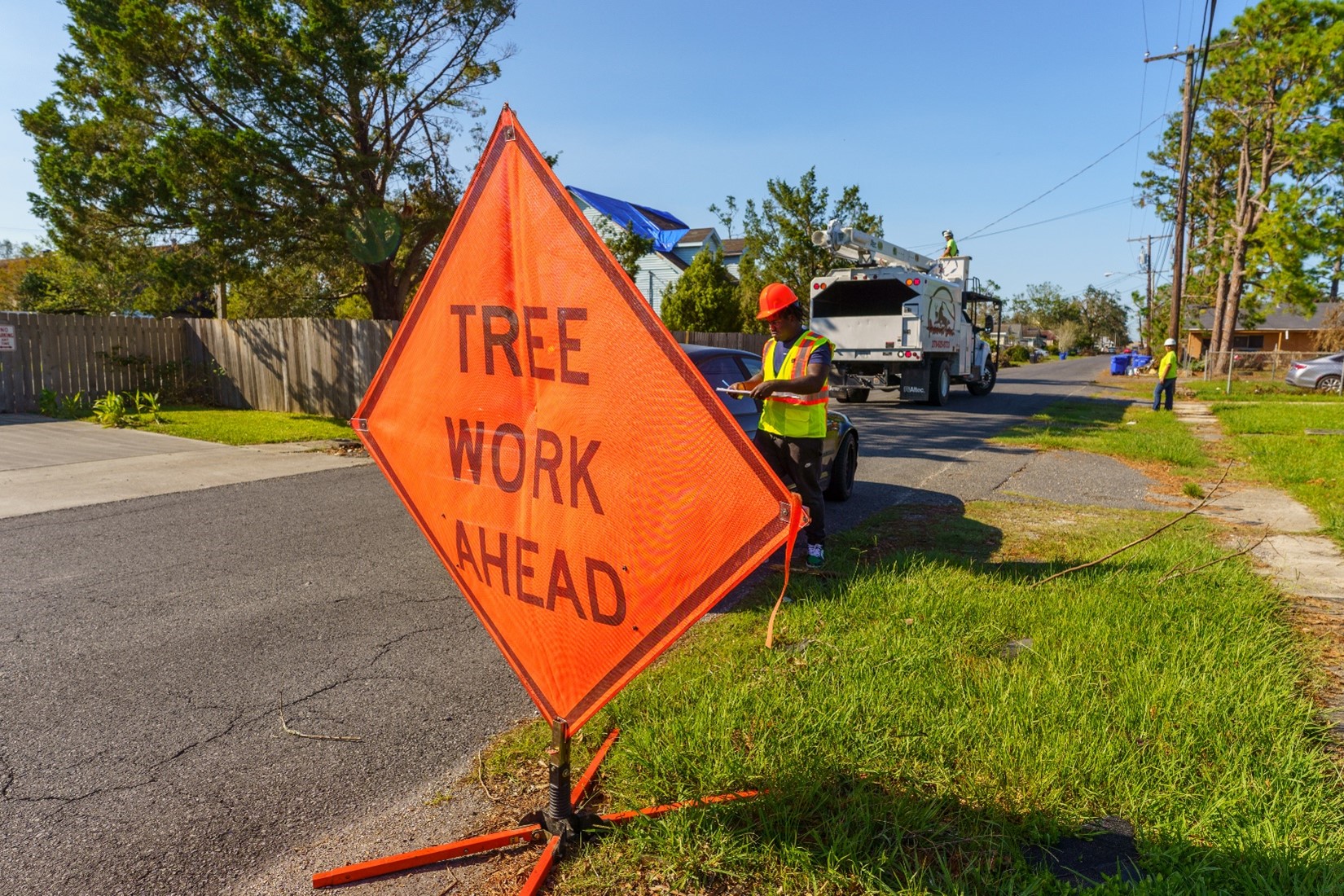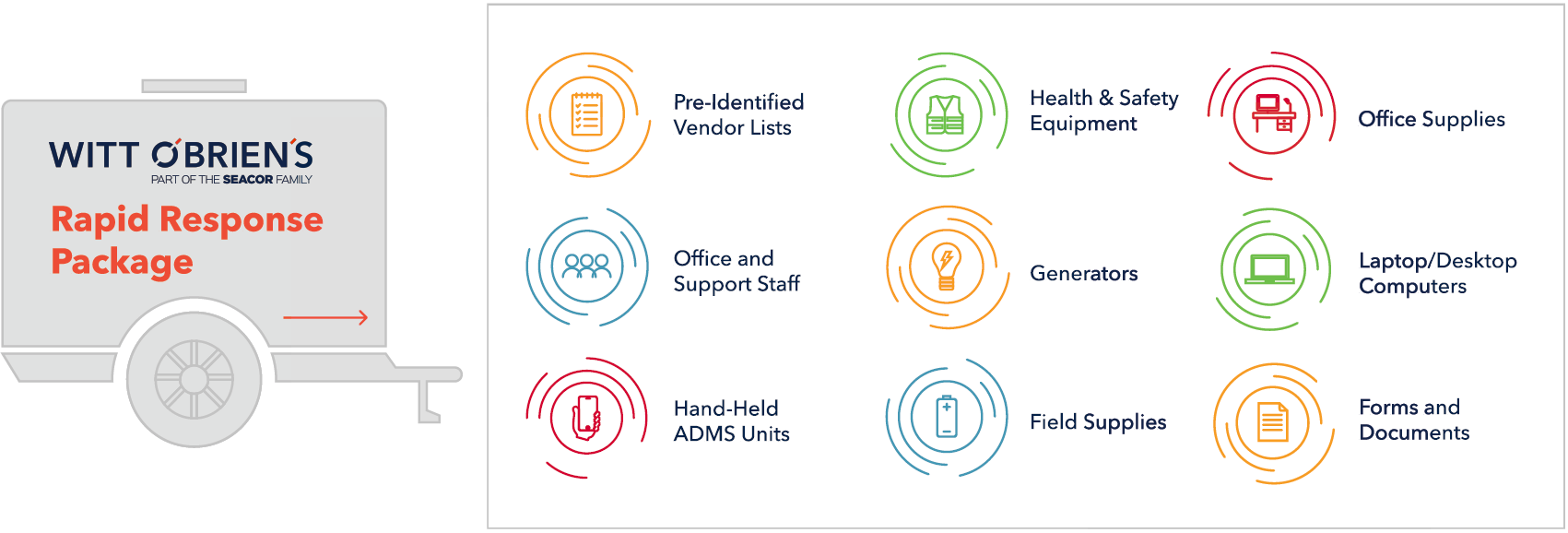
CASE STUDY: HURRICANE IDA
Hurricane Ida, was the second-most damaging weather disaster in the State and the fifth costliest nationwide at more than $75 billion.
CHALLENGES
On August 29, 2021, Hurricane Ida, a Category 4 storm, made landfall in Port Fourchon, Louisiana, with sustained winds of 150 miles per hour-the second-most damaging weather disaster in the State and the fifth costliest nationwide at more than $75 billion. Producing peak storm surges in some locations of up to 14 feet above ground, Ida caused catastrophic flooding and delivered extreme winds, resulting in significant quantities of debris that posed health and safety issues, including vegetative material, hazardous trees, and construction-related waste.
As with many major storms, debris response and recovery initiatives are often complicated by a myriad of factors. Challenges can include lack of road accessibility due to erosion and closures, damage to response vehicles, poor internet and cell phone coverage, and limited availability of key commodities like food, water, and gasoline, among many other essentials.
Access to qualified and reliable staff can also be difficult, a significant issue facing first responders in Lafourche Parish, Louisiana, post Hurricane Ida. With many locals having evacuated prior to the storm, few to no monitors were available for hire, resulting in the need to staff from nearby cities and parishes. Not only were commute times up to an hour for many, adding strain to the workforce, fuel consumption-a commodity already in short supply-greatly increased. Local lodging and accommodation were also virtually nonexistent with many buildings in need of significant repair.
SOLUTION
Following the touchdown of Hurricane Ida, the City of New Orleans, the City of Thibodaux, and Lafourche Parish immediately activated their standby contracts with Witt O'Brien's for emergency debris monitoring. In 24-48 hours following the Notice to Proceed, debris specialists were on location at all three sites and kick-off meetings were held for operations planning. Within 30 days of the storm, subsequent standby activations occurred for the Southeast Louisiana Flood Protection Authority-East and the Greater Lafourche Port Commission.
Across each of the five project sites, Witt O'Brien's monitors tracked all manner of debris from ''cradle to grave''-from their point of origin through to final disposal. With the aid of Witt O'Brien's pre-positioned Rapid Response Package trailers, monitoring staff were equipped with hand-held devices, field supplies, health and safety equipment, as well as other essential items enabling their immediate integration into the existing response efforts.

While on location, the debris team conducted additional debris monitoring and removal activities, such as the certification of nearly 1,000 debris removal vehicles and equipment (i.e., skid-steer, front-end loader, stump removal, etc.). Throughout operations, Witt O'Brien's experts also provided removal contractor invoice reconciliation as well as comprehensive FEMA reimbursement documentation and project worksheet (PW) support

RESILIENCE DELIVERED
Across all five project sites, Witt O'Brien's scaled its support team to more than 650 supervisory and monitoring staff during peak response. Such high-speed, high-volume activations were possible due to successful pre-planning exercises, the strength of pre-existing client relationships, and the team's strong cadre of debris monitors supplemented by nearly a dozen staffing agencies nationwide.
To date, as a result of Hurricane Ida-generated debris, Witt O'Brien's has monitored the removal of more than 2.2 million cubic yards (CY) of vegetative and construction and demolition (C&D) debris, as well as 8.3 million pounds of solid waste, more than 27,000 hazardous trees, and over 2,000 miscellaneous units of debris (i.e., white goods, creosote pilings, tires, etc.). Combined, this debris represents nearly $40 million in FEMA Category A funding, with the Lafourche Parish project still ongoing as of June 2022.


